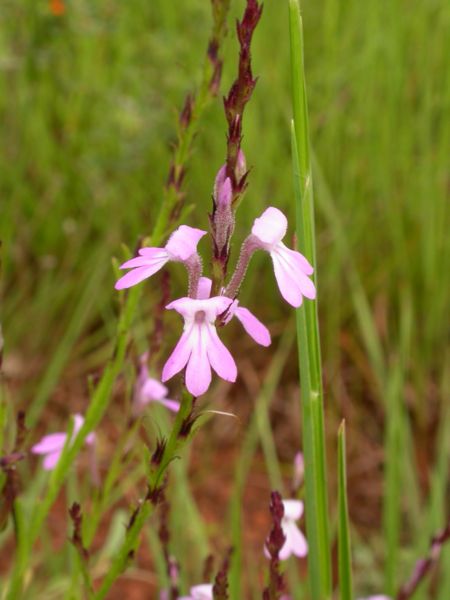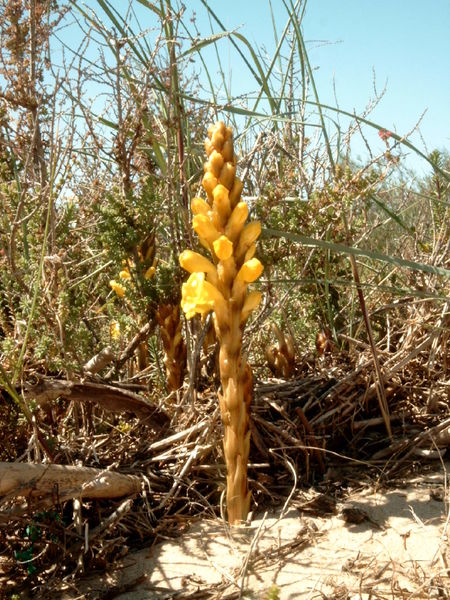OrobanchaceaeOrobanchaceae, or the broomrape family, is a family of flowering plants of the order Lamiales, with about 90 genera and more than 2000 species. Many of these genera were formerly included in the family Scrophulariaceae s.l. Together they are a monophyletic group, forming a distinct family. This is a cosmopolitan family, found mainly in temperate Eurasia, North America, South America, parts of Australia, New Zealand and tropical Africa. Only the hemiparasitic species possess an extensive root system. In most holoparasitic species there is a swollen mass of short, bulky roots or one big swollen haustorial organ, simple or composite. The roots are attached to their host by means of haustoria, which transfer nutrients from the host to the parasite. The holoparasites have reduced, somewhat fleshy, scaly, sessile leaves. These simple, lanceolate, oblong to ovate scales are small and alternate. The hermaphroditic flowers are bilaterally symmetrical and grow either in racemes or spikes or singly at the apex of the slender stem. The tubular calyx is formed by 2-5 united sepals. There are five united, bilabiate petals forming the corolla. The upper lip is two-lobed, the lower lip is three-lobed. There are two long and two short stamens on slender filaments, inserted below the middle, or at the base of the corolla tube, alternating with the lobes of the tube. A fifth stamen is either sterile or lacking completely. The anthers dehisce via longitudinal slits. The pistil is one-celled. The ovary is superior. The flowers are pollinated by insects or birds (e.g. Castilleja). The fruit is a dehiscent, non-fleshy, 1-locular capsule with many very minute endospermic seeds. These are dispersed by the wind over long distances, increasing their chances to find a new host. The hemiparasites are green and photosynthetic whereas the holoparasites may be yellowish, brownish, purplish, or white, i.e. lacking any green color. This family has tremendous economic importance because of the damage caused by genera such as Orobanche and Striga.
From Wikipedia, the free encyclopedia |
|

